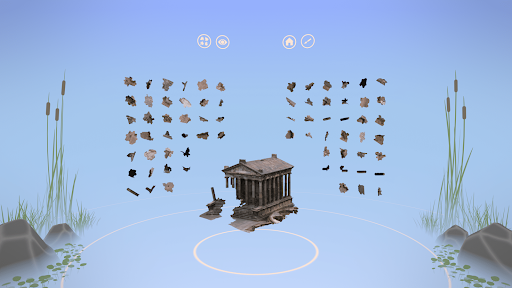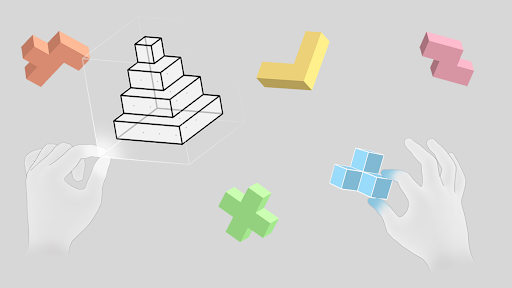As a very technologically driven sector, the film industry hasn’t missed the jump into the immersive world that gaming and app development industries have openly embraced. The idea to fully immerse the audience in storytelling has been incredibly tempting for entertainment purposes. In this new world the user is no longer a passive spectator, but rather has the opportunity to participate and even affect the course of the story.
A few years ago this may have sounded like a little too much, however the market, and consequently the industry, for this kind of content has experienced a fast growth. In this context of gamified experiences and immersive content, how can creators take advantage of it for the development of their stories?
There are several ways to introduce immersive technologies into storytelling to further engage the audience. There are the so-called 360-degree experiences where the footage is shot with special cameras that already produce spheric content. This kind of workflow is more easily manageable than the ones that are shot with a set of traditional cameras and stitched together or the integration of both styles . The combination for sure creates a special look that can be used for immersive experiences, as well as for traditional content with incredible pans and camera movements that are impossible to capture without 360 cameras. This is the case with the panoramic “planet” effect shots that have been integrated in video clips and different types of content.

Bembé . NEWMENstudio.
In this image from the Sundance FF premiered VR experience Bembé by NEWMENstudio, the shot was made with a 360-degree camera set and reframed into a planet-like picture.
The 360-degree experiences provide a limited amount of interaction to the user. Obviously, it needs to be seen in VR headsets so they can take full advantage of the environment that was created. The user chooses where and when to look, and views are arranged mostly standing up to allow more body freedom. It’s up to the director and the creative team to drive the user through a really engaging experience where they feel the urge to discover the new environment they were placed in. Through a correct and timewise use of the story plot, in addition to the sound effects, music, etc., the user’s attention can be drawn from one angle to another . This ability to engage the audience will finally dictate the quality of the content, and so it’s interactivity.
On the other hand, many authors create a difference between this type of content and the virtual reality (VR) where, in addition to an immersive environment, the user can also move in the horizontal space and directly interact with objects, spaces, and characters of the scene. For the creation of VR experiences, the environment can be shot in 360 degrees, entirely animated, computer generated, or, again, an integration of all of the above. Being given all the basic knowledge around immersive concepts and how these can be used by filmmakers, one may ask: is it worth it? Is there a market for VR filmmaking?

Dinner Party . Lauren Waxler.
This picture from the stage of Dinner Party, award-winning VR short story, shows camera placement and technology involved in creating an immersive and engaging shot.
VR and all its possibilities is now part of all major festivals and markets of the film industry around the world. But it hasn’t always been like that, especially for developing regions like MENA (Middle East and North Africa) and Latam (Latin America). The Argentinian Gabriel Giandinoto, director of content for Latam in Virtuality and developer of the Ibero-American Catalogue of Immersive Content, answers some of the major questions around this issue.
Why and how is Ibero-America related to immersive technologies?
The first thing that we, from the organization side, wanted to achieve was to see the creation from Latin America, Iberian peninsula (Spain and Portugal) from the human side of the people involved in it. That’s why we inserted a new section in the Ventana Sur (South Window) program. This is the major market for South American filmmakers launched in collaboration with the Marché du film of Cannes Film Festival and the National Institute of Cinema and Visual Arts of Argentina (INCAA).
We called the section Trends, and it encompassed the business sector and the multi-platforms involved. It can be referred to as the first research and curatorship of immersive creations in the region as it started in 2016. The main topics of discussion back then were 360-degree videos, full-dome content, and the immersive experience of 4D , even though the last one was more related to cinema showrooms. The majority of the creations were focused documentaries in 360 degrees and less in animation, something that has changed over time.
How has Latam been involved in the filmmaking expansion towards VR?
At the beginning VR was more related to marketing and publicity , with the majority of instances in Brazil being tourism agencies with 360-degree content and some prototypes and experimentations for the development of software and hardware. Also the rules for using the technology, like 25-minute maximum time usage, the length of the shoots, and the new style of editing with less cuts weren’t yet established. That’s the reason why the first examples were related to commercial means and less about storytelling.
The first Trends edition included a project pitch competition, and when directors were asked why they chose VR technology to tell the story, they all answered that they wanted to experiment. However, in the next edition, Trends projects were highly elaborate, and the jury could see the jump into VR storytelling. That was the case of the winner back then, Dinner Party , a production from the North American latino community.
Other really interesting projects were Gloomy Eyes , an Argentinian animation, and 4 Feet High or Metro Veinte. That was in 2017, the year we launched the first Ibero-American Immersive Catalogue. After that other major festivals and markets were open to VR filmmaking and the development of VR content, one of the most important ones being the Venice Film Festival , which is a major platform for creative experimentation. Now there are multiple actors such as the Harvard Factory , Sundance Film Festival , the Cannes Film Festival , and so on that support VR filmmaking and project development.
What are the major challenges for VR creators and businesses?
After more than six years of being around VR creation in Latin America and after its insertion in the Venice Film Festival, in Italy, and the March du film in Cannes, France, especially through the presentation of our experience with the Catalogue in 2018, there are still several challenges that we can foresee. The holistic vision of what is produced in all the countries and communities within is still lacking, even though big names like Sundance FF have always emphasized these issues, and our Catalogue intended to fill that gap.
One issue is the access to technology and the rapid time in which it becomes obsolete. Other things that creators around the world are lacking, especially in Latin America, is the access to training and first-hand exposure to what it’s happening in other parts of the globe. On the other hand, I believe that a “Latin style” has been forged over the last years, and it for sure has a relation with all the challenges aforementioned, but also with the flavor of the stories that we choose to tell.
What’s the future of VR filmmaking in Latam?
For us looking to the future, I believe the business model for VR filmmaking will still be a challenge. In streaming and downloadable platforms specializing in VR or that include it in its portfolio, the Latam content still has to find its niche . However, we more often see gamification experiences that use VR storytelling, and the borders between sectors like the game industry, film, and entertainment have become increasingly blurred . Also, with the pandemic and the new dynamics it introduced to the virtual world, we will probably see more concentrated enterprises focused on software and hardware development that may monopolize the market, but for sure will decrease costs while boosting access to technology. The creation of the metaverse has a direct relation with filmmaking , along with the development of blockchain and crypto currency transactions.
I should also say that even though Spain still is at the head of the Ibero-American market due to the European Union support and all other circumstances around it, there are other countries leading in the south . This is the case with Chile, Ecuador, Colombia, and Argentina, that have created enterprises and models that further develop the region. The Knowledge Law and the Farm Economy implementation are some examples of it. In this regard, I believe that we as Latin Americans have the challenge to maintain the human side of interactions as we are doing right now with this conversation, and to keep our style in all the content and stories that we produce.
— Patricia Díaz, VR Filmmaker



